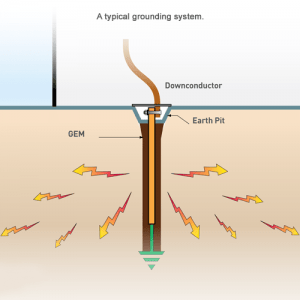
Mechanical Engineering Interview Questions for freshers

1. Explain the second law of thermodynamics?
The entropy of the universe increases over time and moves towards a maximum value.
2. What kinds of pipes are used for steam lines?
Normally galvanized pipes are not used for steam. Mild steel with screwed or welded fittings are the norm. Pressure and temperature are very important factors to be considered in what type of materials to be used. Steam even at low pressures can be extremely dangerous.
3. What is the difference between shear center flexural center of twist and elastic center?
The shear center is the centroid of a cross-section. The flexural center is the center of twist, which is the point on a beam that you can add a load without torsion. The elastic center is located at the center of gravity. If the object is homogeneous and symmetrical in both directions of the cross-section then they are all equivalent.
4. What is ferrite?
Magnetic iron rock
5. What is the difference between projectile motion and a rocket motion?
A projectile has no motor/rocket on it, so all of its momentum is given to it as it is launched. An example of a projectile would be pen that you throw across a room. A rocket or missile does have a motor/rocket on it so it can accelerate itself while moving and so resist other forces such as gravity.
6. What is a cotter joint?
These types of joints are used to connect two rods, which are under compressive or tensile stress. The ends of the rods are in the manner of a socket and shaft that fit together and the cotter is driven into a slot that is common to both pieces drawing them tightly together. The tensile strength of the steel is proportionate to the strength needed to offset the stress on the material divided by the number of joints employed.
7. What is the alloy of tin and lead?
A tin and lead alloy is commonly called solder. Usually solder is a wire with a rosin core used for soldering. The rosin core acts as a flux.
8. What does F.O.F. stand for in piping design?
FOF stands for Face of Flange. A flange has either of the two types of faces: a) Raised face b) Flat face The F.O.F is used to know the accurate dimension of the flange in order to avoid the minute errors in measurement in case of vertical or horizontal pipelines.
9. Explain Otto cycle?
Otto cycle can be explained by a pressure volume relationship diagram. It shows the functioning cycle of a four stroke engine. The cycle starts with an intake stroke, closing the intake and moving to the compression stroke, starting of combustion, power stroke, heat exchange stroke where heat is rejected and the exhaust stroke. It was designed by Nicolas Otto, a German engineer.
10. What is gear ratio?
It is the ratio of the number of revolutions of the pinion gear to one revolution of the idler gear.
11. What is annealing?
It is a process of heating a material above the re-crystallization temperature and cooling after a specific time interval. This increases the hardness and strength if the material.
12. What is ductile-brittle transition temperature?
It is the temperature below which the tendency of a material to fracture increases rather than forming. Below this temperature the material loses its ductility. It is also called Nil Ductility Temperature.
13. What is a uniformly distributed load?
A UDL or uniformly distributed load is a load, which is spread over a beam in such a way that each unit length is loaded to the same extent.
14. What are the differences between pneumatics and hydraulics?
a) Working fluid: Pneumatics use air, Hydraulics use Oil b) Power: Pneumatic power less than hydraulic power c) Size: P components are smaller than H components d) Leakage: Leaks in hydraulics cause fluid to be sticking around the components. In pneumatics, air is leaked into the atmosphere. e) Pneumatics obtain power from an air compressor while hydraulics require a pump f) Air is compressible, hydraulic oil is not
15. What is enthalpy?
Enthalpy is the heat content of a chemical system.
16. What is a positive displacement pump?
A positive displacement pump causes a liquid or gas to move by trapping a fixed amount of fluid or gas and then forcing (displacing) that trapped volume into the discharge pipe. Positive displacement pumps can be further classified as either rotary-type (for example the rotary vane) or lobe pumps similar to oil pumps used in car engines. These pumps give a non-pulsating output or displacement unlike the reciprocating pumps. Hence, they are called positive displacement pumps.
17. Why would you use hydraulics rather than pneumatics?
Hydraulics is suitable for higher forces & precise motion than pneumatics. This is because hydraulic systems generally run at significantly higher pressures than pneumatics systems. Movements are more precise (repeatable) because hydraulics uses an incompressible liquid to transfer power whilst pneumatics uses gases. Pneumatic systems have some advantages too. They are usually significantly cheaper than hydraulic systems, can move faster (gas much less viscous than oil) and do not leak oil if they develop a leak.
18. What is isometric drawing?
It is a 3-D drawing used by draftsmen, architects etc
19. What are the advantages of gear drive?
In general, gear drive is useful for power transmission between two shafts, which are near to each other (at most at 1m distance). In addition, it has maximum efficiency while transmitting power. It is durable compare to other such as belts chain drives etc. You can change the power to speed ratio. Advantages: – It is used to get various speeds in different load conditions. It increases fuel efficiency. Increases engine efficiency. Need less power input when operated manually.
20. Which conducts heat faster steel copper or brass?
Copper conducts heat faster than steel or brass. Any material that is good for conducting heat is also good for electricity in most cases. Wood terrible for transferring heat thus is also insulator for electric.
Top 40 Mechanical Interview Questions updated on Sep 2019 part 2


Like!! Really appreciate you sharing this blog post.Really thank you! Keep writing.